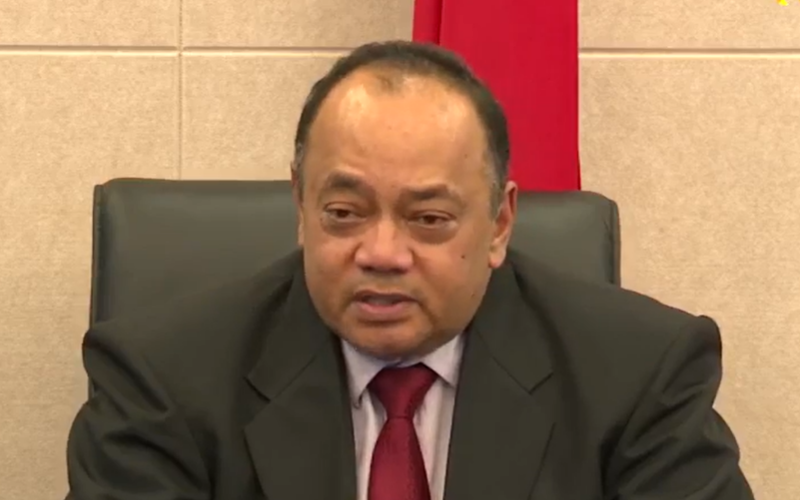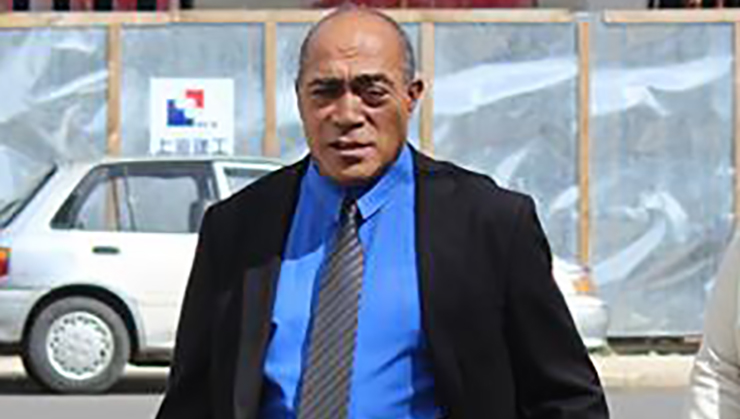By Iliesa Tora of rnz.co.nz and is republished with permission

Teams having scrimmaging sessions in Honiara ahead of this weekend’s tournament. Photo: Oceania Rugby
Samoa and Tonga’s sevens rugby teams are top contenders for qualification into the World Rugby Sevens Challenger Series at this weekend’s 2024 Oceania Rugby Sevens in Honiara.
The two teams stand out as favourites, with Fiji, who is in the annual World Sevens Series (now the HSBC Sevens Series), not being considered, and Papua New Guinea remains suspended from Oceania competition.
Both Samoa and Tonga are fielding men’s and women’s teams at the event.
The top two men’s teams and the top women’s team, excluding Fiji, will qualify for the Challenger Series.
The top four teams from the Challenger Series then go onto the promotion relegation series for the main HSBC Seven Series.
While Samoa men’s team has been part of the HSBC Sevens Series for years past, they lost their spot at the promotion relegation series earlier this year. Tonga men’s have also been part of the Challenger Series, but unsuccessful at qualifying for the main series.
However, both countries will be guided by new coaches at the tournament following new appointments in October.

Tong 7s teams arrive in Honiara for the 2024 Oceania 7s tournament. 1 December 2024 Photo: Oceania Rugby
Tonga Rugby selected former Australia and Tonga Sevens player ‘Atieli Pakalani as head coach for their men’s team, while Lino Filisione was appointed the new coach of the women’s team.
Pakalani, who played for Tonga in the last four seasons and replaced Tevita Tuifu’a, has gone on to be head coach of the ‘Ikale Tahi.
He has retained majority of the players that he had played alongside in the Tonga squad in 2023 and 2024.
Lakapi Samoa has also named new coaches: Matamua Upati Junior Salima for the men’s and Filoi Eneliko for the women’s team.
The men’s team has four new players, while the women’s team includes two new caps.
Before leaving Apia last week, the two teams received financial support from a local sponsor, a gesture that was appreciated by Lakapi Samoa.
“This partnership with FedPac Group is a tremendous boost for Manu Samoa 7s and Manusina 7s. Their generous support allows us to focus on delivering strong performances at the Oceania 7s, showcasing the talent and resilience of Samoan rugby,” Lakapi Samoa’s high performance general manager Seamanu Douglas Ngau Chun said.
On paper, both the Samoa and Tongan men’s teams should be in the battle for the two top spots this weekend.
Both teams and others have been running through their game plans in Honiara this week, with some getting into scrimmaging session as well.
The women’s competition should see a final tussle between Samoa and Tonga, although anything can happen on the day.

Manusina 7s training in Honiara for the 2024 Oceania Rugby 7s competition. 2 December 2024 Photo: Oceania Rugby
Serevi says event good for host country
Meanwhile, former sevens rugby wizard, Waisale Serevi, says hosting the Oceania 7s rugby tournament could open the door for the Solomon Islands to host more events in the future.
Serevi is in Honiara with Oceania Rugby, promoting the event, and holding rugby clinics with local rugby clubs, and Solomon Islands Rugby.
The current India Rugby sevens head coach said Solomon Islands will get a lot of exposure out of hosting the event.
He said World Rugby is currently taking the game to the developing world, and with the current facilities like the National Stadium in Honiara, there might be a chance of the country getting to host other tournaments.
Serevi said competition will be tough. with new teams Niue and Kiribati also making their debuts at the tournament.
“I know it will be an exciting tournament, with Samoa and Tonga being favourites,” he said.
“But anything can happen and we will have to wait and see.”
He has been holding coaching clinics around Honiara, where he is as guest of Oceania Rugby.
This is the first time that the region’s premiere rugby tournament will be held outside of Fiji, New Zealand, Australia, and Samoa.

Waisale Serevi in Honiara, where he has been conducting coaching clinics, ahead of this weekend’s Oceania 7s tournament. Photo: Oceania Rugby
Partners happy with event
Oceania Rugby said Solomon Islands Rugby hosting the event signals increased recognition of the country’s growing stature in the regional sporting community.
They successfully hosted the 2023 Pacific Games last November, in new sports facilities, including the National Stadium, which will be used for the Oceania 7s
Solomon Islands Prime Minister Jeremiah Manele expressed his pride in the announcement, noting the significance of hosting such a major international event.
“The Solomon Islands government is deeply humbled to be partners with Oceania Rugby to host this event here in Honiara in December 2024. The Government will do all that it can to make sure that this is a successful and memorable event,” Manele said.

Teams having scrimmaging sessions in Honiara ahead of the 2024 Oceania 7s tournament. Photo: Oceania Rugby
Oceania Rugby president Richard Sapias highlighted the importance of expanding the tournament’s reach to new host nations like the Solomon Islands.
“We extend our deepest gratitude to the Solomon Islands Government for their remarkable vision and foresight in bringing the Oceania Rugby 7s to Honiara. Their unwavering faith in the power of sport, and their commitment to investing in rugby, speaks volumes about their dedication to growing the game in the Oceania region.”
Oceania Rugby general manager Frank Puletua praised the Solomon Islands’ commitment to rugby and sporting excellence.
“Bringing all these teams to the Solomon Islands, a land with such deep historical significance, is truly special. This is a place where many nations once met in conflict, but now, through the unifying power of sport, we come together,” Puletua said.
SIRU executive board president George Temahua said hodting the event “is a dream come true for Solomon Islands Rugby”.
“This tournament is not only a proud moment for our nation but a golden opportunity for our players, fans, and the entire country,” he said.
Teams started arriving earlier this week.
Games kick off on Saturday, with finals scheduled for Sunday afternoon.














